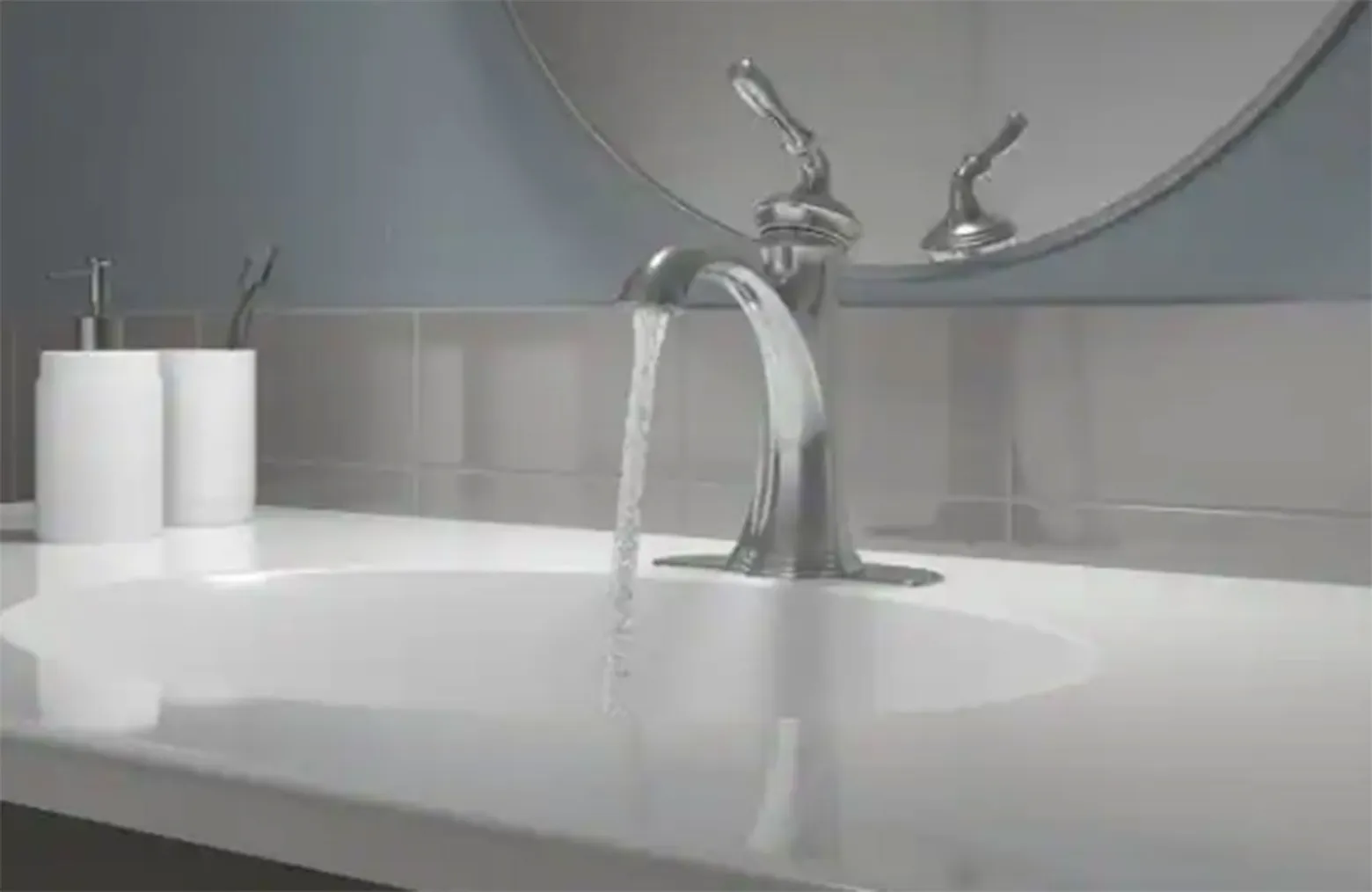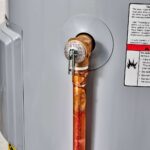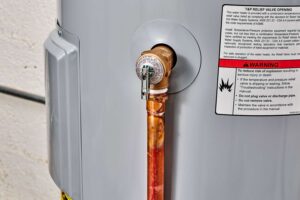
Facing issues with your sink faucet, such as leaks or low water pressure? These problems can be frustrating, but Masterflo Plumbing has the expertise to help. Leaky faucets often result from worn O-rings and seals, which can be replaced to stop the drip. Low water pressure is commonly caused by clogged aerators or damaged supply lines, and addressing these can restore proper flow. Dripping faucets are typically fixed by replacing worn-out washers, while handle malfunctions may just need tightening or lubrication. Regular cleaning and preventive maintenance can prevent rust and corrosion. If you experience water hammer noise or persistent issues, it’s best to seek professional assistance from Masterflo Plumbing to ensure your plumbing system is in top shape.
Key Takeaways
- Leaking faucet: Check O-rings and seals, replace damaged parts from a hardware store, reassemble, and test for leaks.
- Low water pressure: Clean aerator, inspect supply lines, consider replacing cartridge, seek plumber’s help if needed.
- Dripping faucet: Replace worn-out rubber washers, reassemble faucet properly, and test for drips.
- Handle malfunction: Tighten screw, lubricate stiff handles, replace O-ring, or install a new handle for smooth operation.
- Rust and corrosion: Regular cleaning, use vinegar for tough spots, apply protective coating, seek professional help for severe issues.
Common Sink Faucet Leaks
If you notice a drip or a steady stream coming from your sink faucet, it’s likely experiencing a common leak issue. Leaks can be caused by worn-out seals, loose parts, or a faulty installation. The first step to fix this is to turn off the water supply under the sink. Next, plug the drain to prevent any small parts from falling down.
Once you’ve done that, grab a wrench and carefully disassemble the faucet. Check the O-rings, washers, and seals for any damage. If you spot any issues, head to your local hardware store to get replacement parts. Remember to bring the old parts with you to make sure you get the right fit.
After replacing the damaged components, reassemble the faucet, making sure everything is tightly secured. Turn the water supply back on and test the faucet. If the leak persists, it might be time to call a professional plumber to assess the situation further.
Low Water Pressure Problems
To troubleshoot low water pressure problems with your sink faucet, start by checking for any clogs or obstructions in the aerator. The aerator is a small attachment located at the end of the faucet spout. Over time, debris and mineral deposits can build up in the aerator, restricting the flow of water and causing low water pressure. Unscrew the aerator and clean it thoroughly by rinsing it with water or using a small brush to remove any blockages.
If cleaning the aerator doesn’t solve the issue, the low water pressure could be due to a problem with the faucet’s cartridge or water supply lines. Check for any leaks or damage in the water supply lines leading to the faucet. If there are no visible issues, the faucet’s cartridge may need to be replaced. The cartridge is responsible for regulating the flow of water, and a faulty cartridge can result in low water pressure. Consider consulting a plumber if you are unable to identify or fix the problem yourself.
Dripping Faucet Solutions
One common solution for a dripping faucet is to replace the worn-out rubber washers inside the handle. Over time, these washers can deteriorate, causing leaks. To address this issue, you will need to turn off the water supply to the faucet, which is usually done by shutting off the valves under the sink. Next, disassemble the faucet handle to access the old washers. Remove the worn-out washers and replace them with new ones of the same size and type. Make sure to reassemble the faucet properly, ensuring everything is tightly secured. Turn the water supply back on and test the faucet to see if the dripping has stopped. If the problem persists, you may need to explore other potential causes such as corrosion, mineral buildup, or handle malfunctions, which will be discussed in the next subtopic.
Handle Malfunction Fixes
When addressing handle malfunctions in a sink faucet, identifying the root cause is essential for effective repairs. Here are some common issues and solutions to handle malfunctions:
- Loose Handle: Tighten the screw holding the handle in place using a screwdriver.
- Stiff Handle: Apply lubricant to the handle’s joints to improve movement.
- Handle Leaks: Replace the O-ring inside the handle to fix leaks.
- Broken Handle: Purchase a replacement handle and follow manufacturer instructions for installation.
- Handle Alignment: Adjust the handle’s position by tightening or realigning it to guarantee smooth operation.
Rust and Corrosion Issues
Dealing with rust and corrosion in your sink faucet can lead to various issues that require prompt attention for proper maintenance. Rust can develop on metal parts due to exposure to moisture, causing the faucet to look unsightly and potentially impacting its functionality. Corrosion, on the other hand, can eat away at the metal, leading to leaks or even complete failure if left unchecked. To address rust and corrosion problems, start by regularly cleaning your faucet with mild soap and water to remove any buildup. For tougher rust spots, you can use a mixture of vinegar and baking soda to help dissolve the rust. Additionally, applying a protective coating or sealant to metal parts can help prevent future rust and corrosion. If you notice significant rust or corrosion that you can’t handle on your own, it’s best to contact a professional plumber to assess the situation and provide appropriate solutions before the problem escalates.
Sprayer Attachment Concerns
If your sink faucet’s sprayer attachment is experiencing issues, addressing them promptly is important to prevent further complications in its functionality. Here are some common problems with sprayer attachments and their solutions:
- Low Water Pressure: Check for any kinks or blockages in the hose that connects the sprayer to the faucet.
- Leaking Sprayer: Tighten the connections between the sprayer and the hose or consider replacing the O-ring inside the sprayer head.
- Stuck Sprayer Button: Clean the button and the surrounding area to remove any debris causing the button to stick.
- Uneven Spray Pattern: Soak the sprayer head in a vinegar solution to dissolve mineral deposits that may be affecting the spray pattern.
- Difficult to Pull Out or Retract: Lubricate the sprayer hose with silicone-based lubricant to help it move more smoothly.
Spout Blockage Remedies
To address spout blockages in your sink faucet effectively, start by inspecting the aerator for any accumulated debris or mineral buildup. The aerator is a small attachment located at the end of the spout that can easily gather sediment or particles over time, leading to reduced water flow. To clean the aerator, unscrew it from the spout using pliers or a wrench and rinse it thoroughly under water to dislodge any debris. You can also use a small brush to scrub away stubborn buildups. Once clean, reattach the aerator to the spout and test the water flow to see if the blockage has been resolved.
If the aerator inspection doesn’t solve the issue, the blockage may be further down the spout. In this case, you can try using a plumbing snake to dislodge any clogs. Insert the snake into the spout and gently maneuver it to break up the blockage. Finally, flush the faucet with water to clear out any remaining debris and restore proper water flow.
Temperature Control Troubleshooting
Inspect the temperature control knob on your sink faucet to troubleshoot any issues with regulating hot and cold water flow. If you are experiencing temperature control problems, follow these steps to troubleshoot the issue:
- Verify the knob alignment: Confirm the temperature control knob is correctly aligned with the hot and cold indicators. Sometimes, misalignment can lead to inconsistent water temperature.
- Clean the knob: Dust or debris accumulation can hinder the smooth operation of the temperature control knob. Clean the knob using a mild soap solution and a soft cloth.
- Adjust the temperature limiter: Some faucets have a temperature limiter to prevent scalding. Check if the limiter is set too low, restricting hot water flow.
- Inspect for leaks: Leaks in the faucet can disrupt the temperature control mechanism. Look for any signs of leakage and repair it promptly.
- Check the water heater settings: Inconsistent water temperature can also be related to the water heater settings. Ensure the water heater is set to an appropriate temperature for your needs.
Noisy Faucet Repairs
When addressing noisy faucet repairs, consider tightening loose connections as a potential solution. Begin by turning off the water supply valves under the sink. Use a wrench to secure the nut connecting the faucet to the countertop. Check the pipes and make sure they are properly secured and not vibrating against any surfaces. Sometimes, the noise is caused by water hammer, a phenomenon where water hits a closed valve and creates a loud banging sound. To fix this, install a water hammer arrestor, which absorbs the shock and reduces the noise. Another common source of faucet noise is a worn-out washer in the handle. Replace the washer by turning off the water supply, disassembling the faucet handle, removing the old washer, and installing a new one. If the noise persists, consider contacting a professional plumber to inspect the faucet and address any underlying issues.
Need Plumbing Repairs in Canton, GA, or Surrounding Areas? Call Masterflo Plumbing Today!
As North Georgia’s most trusted plumbing company, Masterflo Plumbing brings over 20 years of experience and a team of master plumbers ready to tackle any plumbing issue. Whether you need water heater repairs, replacements, or solutions for minor and major plumbing problems, we’ve got you covered throughout Cherokee County and metro Atlanta. Regular maintenance is key to preventing future issues, so don’t wait until it’s too late. If you’re facing plumbing problems, contact Masterflo Plumbing today and let us provide the expert service you need!


